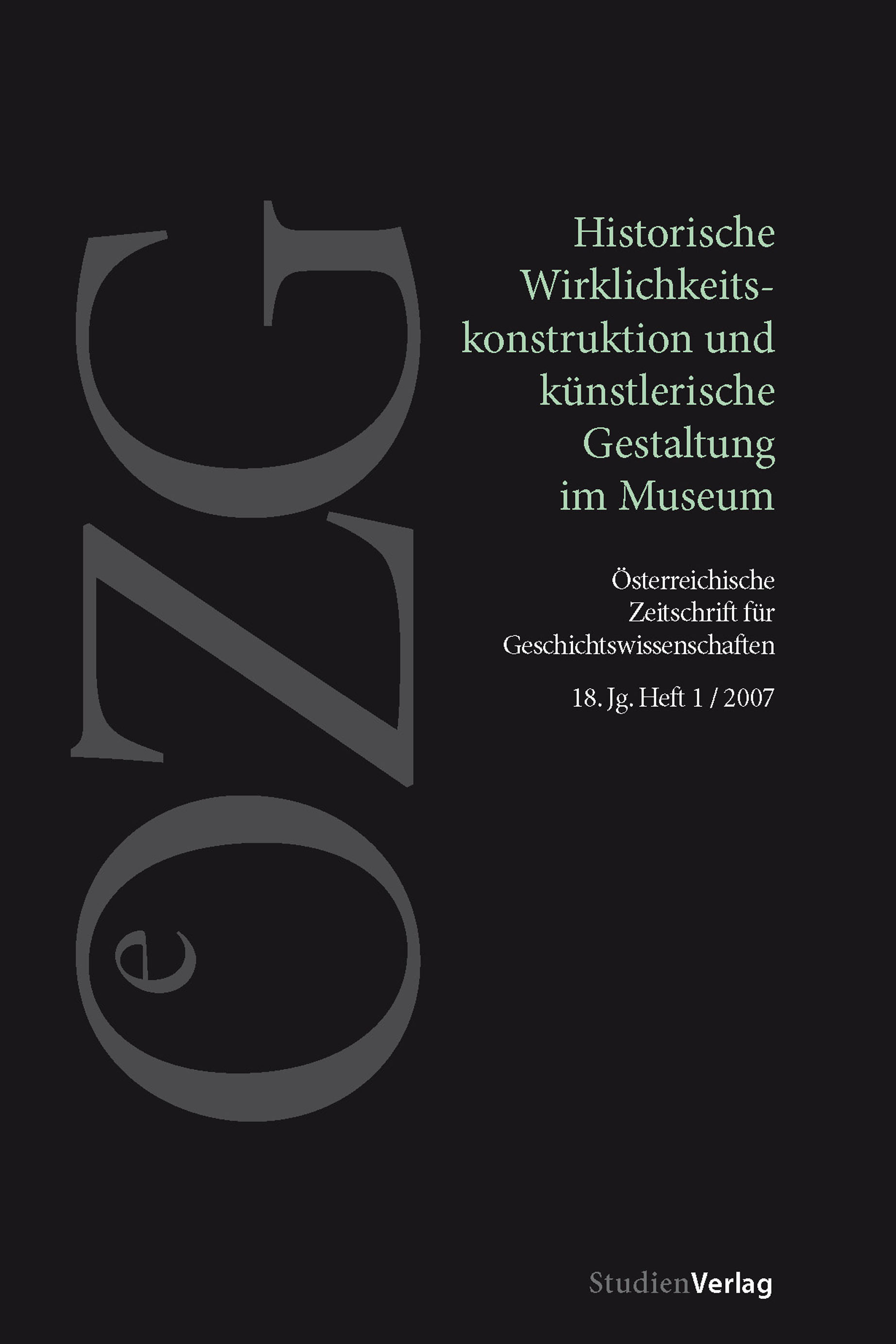Fremd im Museum
Formen der Präsentationen von Migrationsgeschichte und deren Folgen
DOI:
https://doi.org/10.25365/oezg-2007-18-1-3Abstract
The need to (re)present migration-history in museums and exhibitions is now, after a long period of ignoring this phenomen and its historical and social impact, widely accepted in most central European countries. Migration as a subject entered the artistic scene a long time ago and now slowly finds its way into the Museums of History. In some countries ideas for Migration-Museums grow or have already been developed into precise concepts. But the question how migration should be presented is controversially disputed within curators and academics. One reason for this may be migration-history itself, as it is rather elusory because of always being in motion – in many respects: First of all, migration is not a historical phenomen, migration processes are still happening. Second, migration is defined as movement, forced to change place by definition, and that’s why it is not easy to catch. On top of this, migration-processes are mostly affected by emotion. Baudrillard described the inconvenience with the documentation of experiences like those as follows: »The knowledge of an occasion is just the reduced form of an occasion.« (Baudrillard, Strategien) Based on a museological picture of the change-processes like discontextualisation and alienation, which happen to things on their way into a museum or an exhibition, the article reflects possibilities and strategies of the presentation of migration and its history. The review of exhibitions which have already been presented does not only analyse the object-based content, but also the role of the museum as an institution in society.


